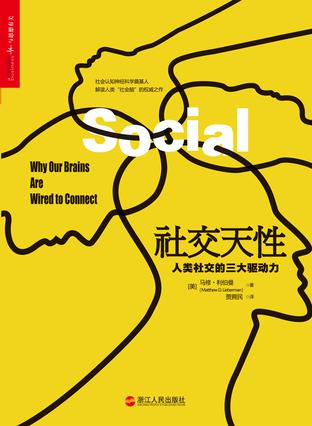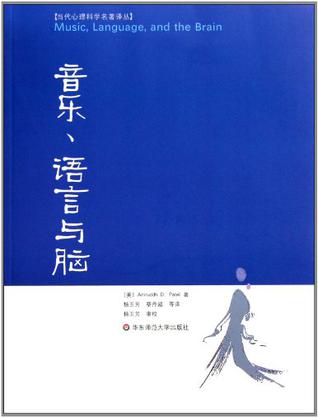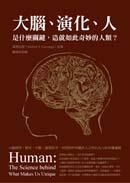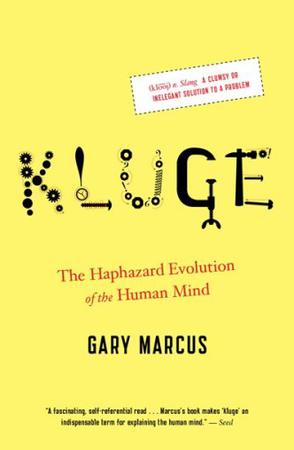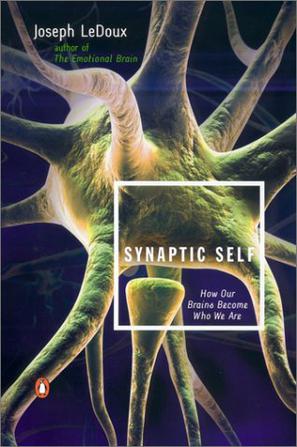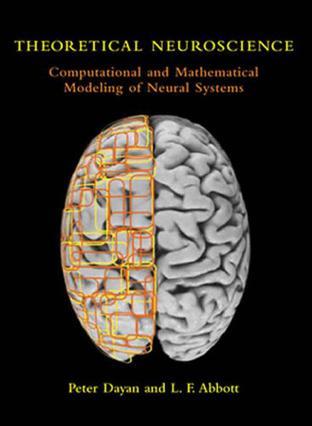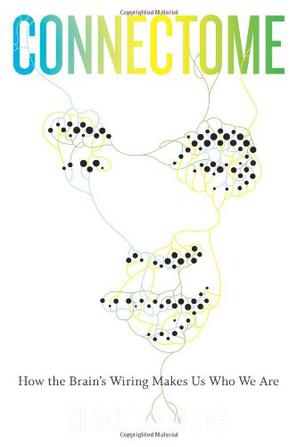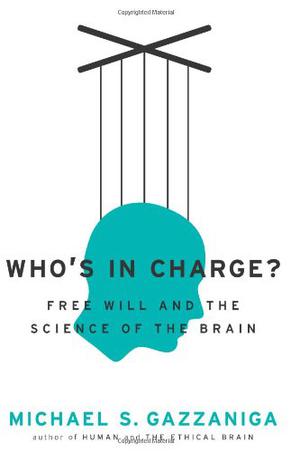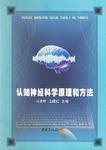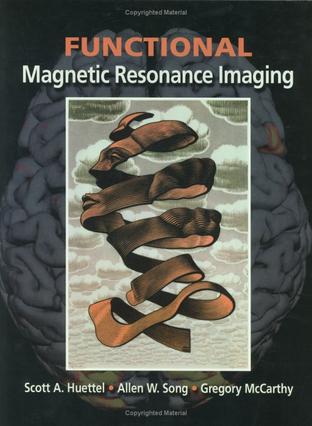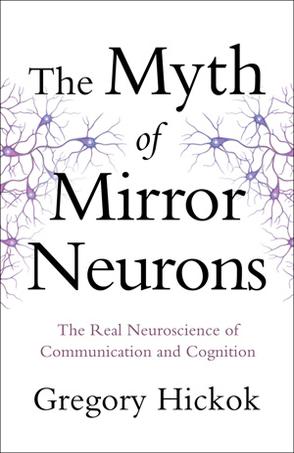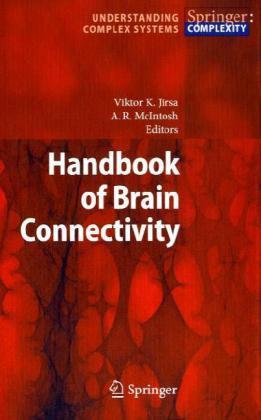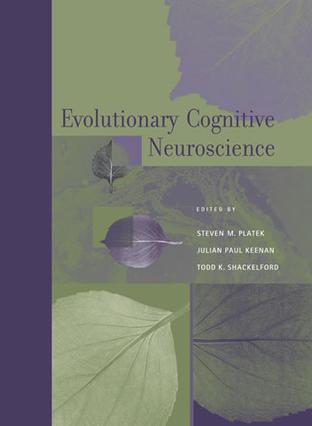欢迎来到相识电子书!
标签:认知神经科学
-
大脑工作原理
协同学创立者哈肯教授在本书中提出关于大脑工作的一种新见解。基于协同学的一般结果,这种新见解认为大脑是一种具有涌现性的复杂自组织巨系统。在精细的运动控制实验、视觉的各种效果,以及脑电图和脑磁图分析的基础上,作者建立了详尽阐述以上新见解的大量显式模型。本书为从事大脑研究的新手介绍了关于大脑实验探索的入门篇章,同时给协同学的初学者提供了协同学基本概念和理论工具的翔实易懂的引导内容。 -
社交天性
[内容简介] ● 《社交天性》是社会心理学家马修·利伯曼解读人类“社会脑”的权威之作,它告诉我们为什么在充满合作与竞争的智慧社会中人们喜爱社交又相互连接,个人的社会影响力如何得以发挥,书中处处充满了令人惊喜的洞见。 ● 为什么有的人天生善于社交,而有的人总是充满障碍? 为什么智商越高的人越难相处? 心痛对人的伤害甚至超过头痛? 慈善组织如何激发人们的捐赠行为? 比金钱更有效的激励员工的方式是什么? ● 针对社会生活的方方面面,从如何理解他人的思想和行为、如何与他人合作,到如何帮助孩子高效学习、如何激励员工努力工作,《社交天性》为我们提供了科学的解释和建议,为我们讲述人类社交的三大驱动力。 ● 这是一本兼具科学性和通俗性的读物,读者不仅可以从中了解研究者们如何通过实证的方法研究人类社会行为的神经基础,还可以借助本书的内容帮助自己更为有效地与他人沟通,从事社交活动,更好地适应社会生活,进而获得更高的幸福感。 [编辑推荐] ● 让“影响力教父”西奥迪尼都赞叹不已的新兴学科开拓者马修·利伯曼倾力之作!首次揭露大脑天生爱社交的神经奥秘。 ● 从如何激发他人的捐赠行为、如何防止偷窃,到广告怎么打才有效,一本让生活更美好的实用指南,从此改变你看待世界与他人的方式! ● 全书论述峰回路转、曲径通幽之美堪比丹·布朗的小说! ● 北京大学国家发展研究院教授汪丁丁、浙江大学经济学系教授&博士生导师叶航、北京大学心理学系教授周晓林、美国加州州立大学(长堤)商学院教授孙涤、“影响力教父”罗伯特·西奥迪尼、“邓巴数”提出者罗宾·邓巴、“棉花糖实验”设计者沃尔特·米歇尔、哈佛大学心理学教授丹尼尔·吉尔伯特等 集体盛赞! ● 湛庐文化出品。 -
音乐、语言与脑
语言和音乐是与人类生活和文化紧密相关的方面。尽管音乐和语言的雏形可能存在于其它物种,例如燕雀,这些能力的复杂性和多样性却是人类独有的。因此,人类的进化极有可能为我们的大脑配备了特别适合语言和音乐习得的神经基础结构。音乐、语言和脑之间的交界面正是Aniruddh Patel撰写的这本既精彩又博学的著作的核心。 本书对目前已知的音乐与语言和脑相关的实证研究作了最好、最全面的总结。Patel博士对音乐和语言在元素、节奏、旋律、句法和意义等不同层面进行比较,并以此作为全书章节的结构线索。在每一个层面,作者首先介绍这两个系统的表征形式及其相互间的差异。然后在看似不同的表征背后,阐明它们认知加工和神经过程的相关性或一致性,并继之给出心理学和认知神经科学研究的证据。如此结构和表述,既富有思想,又不乏情趣。最后一章论及音乐和语言的进化,对这两个系统的发生发展及其对人类群体内交流之不同作用进行了阐述,所论深刻而有见地。 -
大腦、演化、人
三十年來,第一本整合神經科學與認知心理學的革命性巨著! 在一九八○年代之前,神經科學與認知心理學這兩個領域之間幾乎沒有互動,直到裂腦研究先驅葛詹尼加與認知心理學大師米勒,在共赴餐宴的計程車上的一番對談,才促成了認知神經科學的誕生,葛詹尼加因而被譽為「認知神經科學之父」,認知神經科學更成為二十一世紀的顯學。 葛詹尼加對認知神經科學的發展功不可沒,他創建了認知神經科學研究所與學會,並創辦《認知神經科學期刊》,而其學術著作的里程碑——《認知神經科學》(The Cognitive Neurosciences),更是此領域的權威教科書。葛詹尼加不僅是知名的臨床及基礎科學研究者,還出版了多種大眾科普書籍,本書即是他的最新力作。紐約時報評價說:「對腦科學研究來說,葛詹尼加所做的研究堪比史蒂芬.霍金的研究之於宇宙論。」 大師親授的科普課,完整解析所有關於人類的研究! 人類很特別,常常能不費吹灰之力地解決問題,當我們手上拿著大包小包走到家門前,馬上就知道怎麼伸出小指勾住門把開門。人類的心智活動也很旺盛:我們有同情心、道德感,懂得抽象思考,能把幻想和現實分開;還能抑制衝動,延遲滿足時間。除此之外,人類懂得創造美的事物,甚至還會透過科技把性和繁殖分開! 既然我們和其他動物都是由同樣的化學物質組成的,也有同樣的生理反應,為何人類如此獨特? 葛詹尼加從年少時就不停地思考,「人」這個奇妙的物種如何被塑造;而在成為世界首屈一指的腦科學家後,他更能以專業的眼光,看待大腦在這個過程中扮演的角色。為了徹底了解「身為人類」所代表的科學意涵,他統整了神經科學、演化學、認知心理學、遺傳工程、人類學、動物行為學和語言學近十年的最新研究,融合社會科學的田野調查,探討各種令人困惑的問題: ◎ 人類的大腦很特別嗎?腦袋越大就越聰明? ◎ 我們為什麼那麼愛社交?講八卦攸關生存和演化? ◎ 動物有道德感嗎?只有人類有亂倫禁忌? ◎ 人類是唯一的藝術家嗎?猩猩也懂得欣賞夕陽之美? ◎ 意識是怎麼一回事?動物會思考自己知道的事嗎? 人類研究散落在各種不同領域,本書是葛詹尼加用大師的眼光為我們整理、至今為止最完整的人類研究,讓研究者和一般科普讀者,都能津津有味地讀下去。他在書中展現了幽默的筆法,從人類的生理構造、社交行為、道德、同理心,一路剖析至語言、藝術、直覺、意識等層面,結合各領域的文獻,挖掘人類的獨特之處。 跟著大師的思考脈絡,你會驚歎於人類的奧妙,更將明白「生而為人」所代表的重大意義! -
Kluge
How is it that we can recognize photos from our high school yearbook decades later, but cannot remember what we ate for breakfast yesterday? And why are we inclined to buy more cans of soup if the sign says "LIMIT 12 PER CUSTOMER" rather than "LIMIT 4 PER CUSTOMER?" In "Kluge, "Gary Marcus argues convincingly that our minds are not as elegantly designed as we may believe. The imperfections result from a haphazard evolutionary process that often proceeds by piling new systems on top of old ones--and those systems don't always work well together. The end product is a "kluge," a clumsy, cobbled-together contraption. Taking us on a tour of the essential areas of human experience--memory, belief, decision making, language, and happiness--Marcus unveils a fundamentally new way of looking at the evolution of the human mind and simultaneously sheds light on some of the most mysterious aspects of human nature. -
接受与实现疗法
国内第一本接受与实现疗法专业读本 接受与实现疗法(ACT)不仅是构建心理治疗的一套技术,而且从总体上看为个案概念化和心理健康提供了一种全新且深刻的诊断性方法。这本书帮助你学习如何将这种全新的心理治疗模式应用到实践当中,它是第一本解释如何在ACT的框架中对个案进行概念化的指导用书。 《接受与实现疗法:理论与实务》是一本ACT入门书籍,对ACT的影响进行了概述,详细介绍了ACT疗法的六个核心过程——六维模型的六个点,以及病理性改变的自我,即所谓的六维僵化,描述了如何完成个案概念化,并向我们展示了丰富的文献资料,以确立个案概念化的重要性和价值。本书也从不同的治疗传统出发展示了一些可能有所不同的个案概念化,这对于那些具有更为传统的认知行为疗法(CBT)背景的治疗师来说可谓是一笔不小的财富。贯穿全书的那些练习可以帮助你评价自己刚学到的知识,以便更有效地将ACT应用到实践当中。 -
Synaptic Self
Amazon.com A middle-aged neuroscientist walking down Bourbon Street spots a T-shirt that reads, "I don't know, so maybe I'm not." This stimulus zooms from eyes to brain, neuron by neuron, via tiny junctions called synapses. The results? An immediate chuckle and (sometime later) a groundbreaking book titled The Synaptic Self. To Joseph LeDoux, the simple question, "What makes us who we are?" represents the driving force behind his 20-plus years of research into the cognitive, emotional, and motivational functions of the brain. LeDoux believes the answer rests in the synapses, key players in the brain's intricately designed communication system. In other words, the pathways by which a person's "hardwired" responses (nature) mesh with his or her unique life experiences (nurture) determine that person's individuality. Here, LeDoux nimbly compresses centuries of philosophy, psychology, and biology into an amazingly clear picture of humanity's journey toward understanding the self. Equally readable is his comprehensive science lesson, where detailed circuit speak reads like an absorbing--yet often humorous--mystery novel. Skillfully presenting research studies and findings alongside their various implications, LeDoux makes a solid case for accepting a synaptic explanation of existence and provides to the reader generous helpings of knowledge, amusement, and awe along the way. --Liane Thomas --This text refers to an out of print or unavailable edition of this title. From Publishers Weekly Despite ongoing debate about the root cause of psychological disorders, most agree that the development of the self is central to the distinction between normality and psychopathology. Yet neuroscientists have been slow to probe the biological basis for our sense of self, focusing instead on states of consciousness. LeDoux (The Emotional Brain), professor at New York University's Center for Neural Sciences, has come up with a theory: it's the neural pathways the synaptic relationships in our brains that make us who we are. Starting with a description of basic neural anatomy (including how neurons communicate, the brain's embryological development and some of the key neural pathways), LeDoux reviews experiments and research, arguing that the brain's synaptic connections provide the biological base for memory, which makes possible the sense of continuity and permanence fundamental to a "normal" conception of self. Writing for a general audience, he succeeds in making his subject accessible to the dedicated nonspecialist. He offers absorbing descriptions of some of the most fascinating case studies in his field, provides insight into the shortcomings of psychopharmacology and suggests new directions for research on the biology of mental illness. While some may disagree with LeDoux's conclusion that "the brain makes the self" through its synapses, he makes an important contribution to the literature on the relationship between these two entities. Agents, Katinka Matson and John Brockman. (On-sale: Jan. 14) Copyright 2001 Cahners Business Information, Inc. --This text refers to an out of print or unavailable edition of this title. -
脑的阅读
千百年来,眼睛扫视书页,并唤起脑中的整个阅读过程,这种看似简单实则非常复杂的脑机制一直是一个难解之谜。我们对阅读的行为已经习以为常,而忘记了它是一项非常惊人的成就。白纸上的一个个黑色符号是如何引发一系列的声音以及意义的呢?我们的大脑皮层是上百万年演化的结果,我们原本的生存环境中并不存在书写与阅读,但灵长类的脑又是如何演化出识别单词和符号的能力的呢? 法国科学院院士、著名认知神经科学家斯坦尼斯拉斯?迪昂根据他在人脑阅读方面卓有成效的研究,破解了这个谜团,向我们展示了人脑神奇阅读能力是如何形成的。迪昂在大量实证研究的基础上,全新地看待脑阅读机制与文化的思想深刻地改变了我们对教育和学习的观点,史无前例地引领着我们探索人类的能力。 -
Theoretical Neuroscience
Theoretical neuroscience provides a quantitative basis for describing what nervous systems do, determining how they function, and uncovering the general principles by which they operate. This text introduces the basic mathematical and computational methods of theoretical neuroscience and presents applications in a variety of areas including vision, sensory-motor integration, development, learning, and memory.The book is divided into three parts. Part I discusses the relationship between sensory stimuli and neural responses, focusing on the representation of information by the spiking activity of neurons. Part II discusses the modeling of neurons and neural circuits on the basis of cellular and synaptic biophysics. Part III analyzes the role of plasticity in development and learning. An appendix covers the mathematical methods used, and exercises are available on the book's Web site. -
Functional Magnetic Resonance Imaging
This textbook provides a true introduction to functional magnetic resonance imaging (fMRI), which has become the dominant research technique in cognitive neuroscience. Although there is extraordinary interest in fMRI among researchers, instructors, and students alike, its instruction has faced a set of challenges. Existing texts are targeted toward practicing scientists in the field, and assume a level of expertise not possessed by most students. Furthermore, most students do not have access to fMRI equipment and data, so they have no opportunity to gain hands-on experience. This textbook overcomes these limitations by presenting a comprehensive overview of all aspects of fMRI, designed with undergraduate students, graduate students, and beginning researchers in mind. The book progresses through 15 chapters. It begins with an introduction to fMRI and its history, principles, and technical requirements. The following several chapters cover the physics of fMRI, with careful attention devoted toward relating abstract concepts to research applications. Subsequent chapters cover the basic biological properties of the fMRI signal, including its spatial and temporal properties and its variability. Systematic discussions of research design and experimental analysis are included, and will be of particular interest to the many students with graduate or medical school aspirations. The book ends with discussions of future directions for fMRI, not only in terms of advances in understanding the brain and methodological improvements, but also in the integration of fMRI with other research techniques. Included with every copy of the book is a comprehensive CD-ROM containing study questions for each chapter of the book, suggested lab exercises, fMRI data sets including both functional and anatomical data, a tools section, and compete glossary. The authors' goal was to create a book that is sufficiently scientifically rigorous for researchers in the field, but also accessible enough to be easily read and understood by beginning students. All chapters are copiously illustrated, with key terms described in a marginal glossary, and have annotated lists of references. The book can be used as the primary text for classes in fMRI, or as a secondary text for cognitive neuroscience, research methods, or other courses. -
Vision
David Marr's posthumously published Vision (1982) influenced a generation of brain and cognitive scientists, inspiring many to enter the field. In Vision, Marr describes a general framework for understanding visual perception and touches on broader questions about how the brain and its functions can be studied and understood. Researchers from a range of brain and cognitive sciences have long valued Marr's creativity, intellectual power, and ability to integrate insights and data from neuroscience, psychology, and computation. This MIT Press edition makes Marr's influential work available to a new generation of students and scientists. In Marr's framework, the process of vision constructs a set of representations, starting from a description of the input image and culminating with a description of three-dimensional objects in the surrounding environment. A central theme, and one that has had far-reaching influence in both neuroscience and cognitive science, is the notion of different levels of analysis--in Marr's framework, the computational level, the algorithmic level, and the hardware implementation level. Now, thirty years later, the main problems that occupied Marr remain fundamental open problems in the study of perception. Vision provides inspiration for the continuing efforts to integrate knowledge from cognition and computation to understand vision and the brain. -
The Myth of Mirror Neurons
An essential reconsideration of one of the most far-reaching theories in modern neuroscience and psychology. In 1992, a group of neuroscientists from Parma, Italy, reported a new class of brain cells discovered in the motor cortex of the macaque monkey. These cells, later dubbed mirror neurons, responded equally well during the monkey’s own motor actions, such as grabbing an object, and while the monkey watched someone else perform similar motor actions. Researchers speculated that the neurons allowed the monkey to understand others by simulating their actions in its own brain. Mirror neurons soon jumped species and took human neuroscience and psychology by storm. In the late 1990s theorists showed how the cells provided an elegantly simple new way to explain the evolution of language, the development of human empathy, and the neural foundation of autism. In the years that followed, a stream of scientific studies implicated mirror neurons in everything from schizophrenia and drug abuse to sexual orientation and contagious yawning. In The Myth of Mirror Neurons, neuroscientist Gregory Hickok reexamines the mirror neuron story and finds that it is built on a tenuous foundation—a pair of codependent assumptions about mirror neuron activity and human understanding. Drawing on a broad range of observations from work on animal behavior, modern neuroimaging, neurological disorders, and more, Hickok argues that the foundational assumptions fall flat in light of the facts. He then explores alternative explanations of mirror neuron function while illuminating crucial questions about human cognition and brain function: Why do humans imitate so prodigiously? How different are the left and right hemispheres of the brain? Why do we have two visual systems? Do we need to be able to talk to understand speech? What’s going wrong in autism? Can humans read minds? The Myth of Mirror Neurons not only delivers an instructive tale about the course of scientific progress—from discovery to theory to revision—but also provides deep insights into the organization and function of the human brain and the nature of communication and cognition. -
千万别上魔术的当
《千万别上魔术的当》讲述的是关于魔术的神经科学。书中以魔术作为切入点,讲述认知神经科学的相关知识,从而揭示了魔术背后的秘密,进而从魔术背后的神经科学看穿日常生活中的小骗局。 《千万别上魔术的当》适合对魔术及神经科学感兴趣的各类读者阅读。 -
认知神经科学
本书译自MIT出版社1995年推出的同名巨著,它总结了当代科学关于感知觉、注意、记忆、语言、思维表象和意识等基本认知过程的最新研究成果,介绍了相关的新技术和实验范式,还讨论了认知理论的历史和现状以及存在问题,书中附有详尽的最新研究文献。本书对于神经科学、认知科学、计算机理论科学、心理科学和哲学等专业以及相关学科的教师、研究生和研究人员是一本科学价值很高的读物,读后可扩展视野、开阔思路,提高理论水平。 -
Handbook of Brain Connectivity
Our contemporary understanding of brain function is deeply rooted in the ideas of the nonlinear dynamics of distributed networks. Cognition and motor coordination seem to arise from the interactions of local neuronal networks, which themselves are connected in large scales across the entire brain. The spatial architectures between various scales inevitably influence the dynamics of the brain and thereby its function. But how can we integrate brain connectivity amongst these structural and functional domains? Our Handbook provides an account of the current knowledge on the measurement, analysis and theory of the anatomical and functional connectivity of the brain. All contributors are leading experts in various fields concerning structural and functional brain connectivity. In the first part of the Handbook, the chapters focus on an introduction and discussion of the principles underlying connected neural systems. The second part introduces the currently available non-invasive technologies for measuring structural and functional connectivity in the brain. Part three provides an overview of the analysis techniques currently available and highlights new developments. Part four introduces the application and translation of the concepts of brain connectivity to behavior, cognition and the clinical domain. -
Evolutionary Cognitive Neuroscience
Since Darwin we have known that evolution has shaped all organisms and that biological organs--including the brain and the highly crafted animal nervous system--are subject to the pressures of natural and sexual selection. It is only relatively recently, however, that the cognitive neurosciences have begun to apply evolutionary theory and methods to the study of brain and behavior. This landmark reference documents and defines the emerging field of evolutionary cognitive neuroscience. Chapters by leading researchers demonstrate the power of the evolutionary perspective to yield new data, theory, and insights on the evolution and functional modularity of the brain. Evolutionary cognitive neuroscience covers all areas of cognitive neuroscience, from nonhuman brain-behavior relationships to human cognition and consciousness, and each section of Evolutionary Cognitive Neuroscience addresses a different adaptive problem. After an introductory section that outlines the basic tenets of both theory and methodology of an evolutionarily informed cognitive neuroscience, the book treats neuroanatomy from ontogenetic and phylogenetic perspectives and explores reproduction and kin recognition, spatial cognition and language, and self-awareness and social cognition. Notable findings include a theory to explain the extended ontogenetic and brain development periods of big-brained organisms, fMRI research on the neural correlates of romantic attraction, an evolutionary view of sex differences in spatial cognition, a theory of language evolution that draws on recent research on mirror neurons, and evidence for a rudimentary theory of mind in nonhuman primates. A final section discusses the ethical implications of evolutionary cognitive neuroscience and the future of the field.
热门标签
下载排行榜
- 1 梦的解析:最佳译本
- 2 李鸿章全传
- 3 淡定的智慧
- 4 心理操控术
- 5 哈佛口才课
- 6 俗世奇人
- 7 日瓦戈医生
- 8 笑死你的逻辑学
- 9 历史老师没教过的历史
- 10 1分钟和陌生人成为朋友


